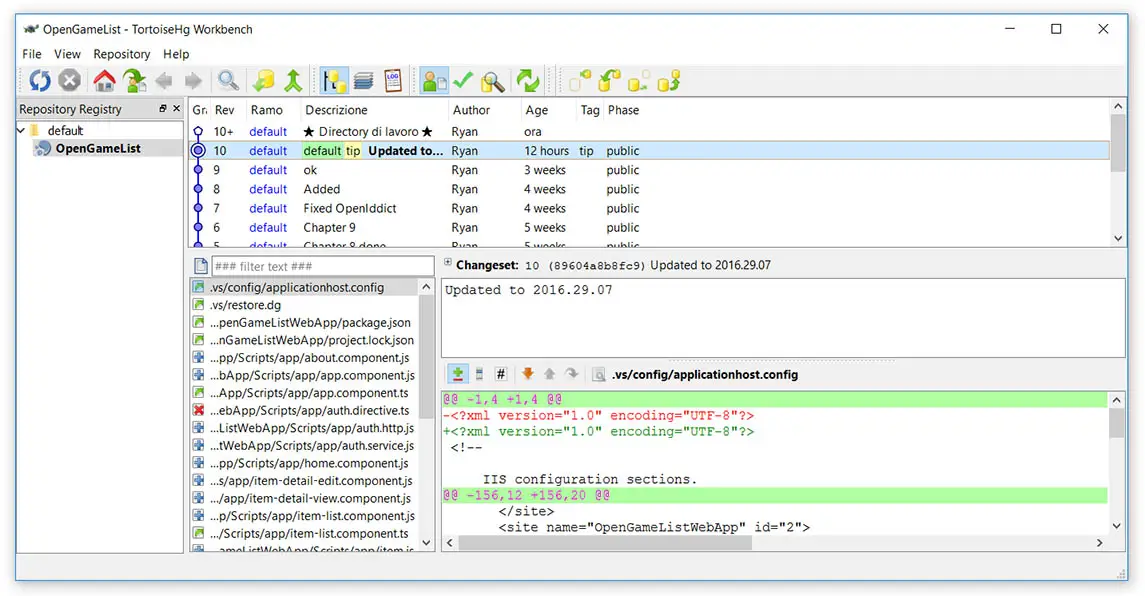

TortoiseHg includes the command line client, so you don’t need to install it separately. This article is intended to record a way which I have found to be robust and hassle free. There are many ways which you can use Mercurial with a SVN repository, each has it’s own caveats and edge-cases. I keep everything in a single C:\Source\my-project folder. My local Mercurial repo contains the full history of the project with a full graph of branches – I use it to search full history, switch between branches, export/import patches, commit and push. That being said, many people are happy with using git-svn and if you’re evaluating options, it may be worth giving it a go too! General Overview I personally prefer Mercurial with hgsubversion since, in my mind, the tooling in Windows is currently much more mature and I already have a hgsubversion workflow which is simple, robust and effective. It’s much easier to perform merges than regular SVN (via export/import patch queues – which I detail later).automated builds and deployments) can continue to operate while everyone moves to DVCS. Any automated processes which use SVN (i.e.Switching between branches is easy and fast.

I can continue to work during network outages or while traveling when I don’t have connectivity. It allows me to work and commit changes (but not push!), search history and switch between branches completely disconnected.



 0 kommentar(er)
0 kommentar(er)
